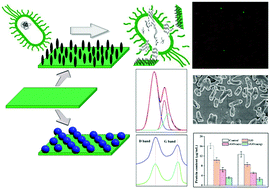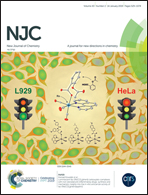Efficacy of shape-monitored reduced graphene oxide–copper nanohybrids: anti-bacterial attributes for food safety and dye degradation studies†
Abstract
Food modifications owing to physical/chemical changes along with microbiological contamination during storage and transportation have become alarming concerns for public health worldwide. Graphene-family nanomaterials have intriguing features, and are used in diverse areas, especially for anti-microbial action, cancer therapy, pathogen bio-detection, drug delivery, etc. Additionally, copper nanoparticles (Cu NPs) have high surface-to-volume ratios and display diverse applications as catalysts. Going beyond the much-cultivated functionality of single nanomaterials for food safety, herein, a propitious hybrid is explored in this regard. Reduced graphene oxide–copper hybrid (rGO–Cu) systems with diverse morphologies have been realized via a facile approach and characterized through TEM, XRD, FTIR, XPS and Raman spectra. The mechanistic antimicrobial proficiency of the synthesized nano-hybrids against E. coli and B. subtilis have been assessed via time dependent killing assay, lipid peroxidation, protein content, inner membrane permeability, cytotoxicity, ROS generation, fluorescence and flow cytometry, and cell wall degradation studies. These observations further suggest that these nano-hybrids can be applied in pathogen-free packaging materials to address food preservation. Not only restricted to anti-bacterial effectiveness, environmental remediation through the catalytic activity of an rGO–Cu sample was also explored for treatment of wastewater containing MB and PNP dyes.



 Please wait while we load your content...
Please wait while we load your content...